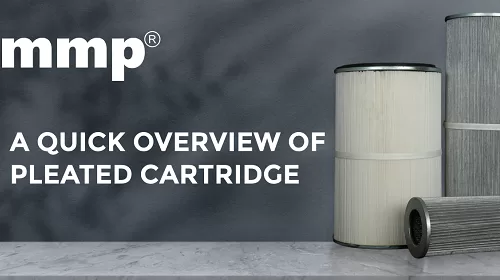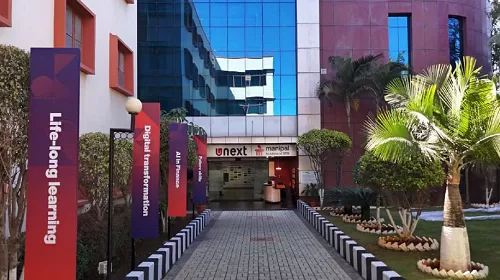By Manoj Nainani, Executive Director, Egis India
Over the years, growth of population, expansion of industry and infrastructures has resulted in accelerated depletion of the natural water supplies and created water stress regions around the world.
Further, to preserve natural resources from overburdening and pollution; stringent environmental regulations are being enforced. This requires additional technology interventions prior to waste water discharge and to undertake water management practices.
Zero Liquid Discharge (ZLD) is a comparatively recent development in waste water treatment that totally eliminates requirement of waste water discharge to the environment. Apart from this benefit, a ZLD process also makes effective use of wastewater treatment, recycling, and reuse, thereby contributing to water conservation through reduced intake of fresh water. ZLD desalination is a high-recovery process that permits to recuperate about 75%–90% of the total water amount from the wastewater.
Evaporation and crystallization technologies are essential steps in any ZLD application. However, these are expensive and energy intensive technologies. Further, prior to implementation of high end technologies, high recovery pre-treatment processes are required to be implemented to recover and reuse maximum possible wastewater.
Although ZLD is a costly process, it paves the way for economic benefits by recovering salts and other chemical compounds. ZLD has been proven effective in reducing discharge, recovering and recycling of treated water within premises. In addition to ZLD, the recovery and reuse of salt reduces the amount of sludge.
Major driving factors in support of ZLD are listed herein:
- Fresh water scarcity
- Water economics
- Environmental regulations
Different methods, which can be employed to achieve ZLD:
- Thermal process (evaporation)
- Reverse osmosis: RO (membrane technology)
- Electrodialysis
- Forward osmosis
- Membrane distillation
- Nanofiltration
Whilst thermal evaporation technologies; such as multistage flash distillation (MSF), and single and multiple effect evaporation coupled to mechanical vapor compression (SEE/MEE-MVC) are already relatively well-established processes in the desalination industry, membrane-based systems including membrane distillation (MD), forward osmosis (FO), reverse osmosis (RO), nanofiltration (NF), and electrodialysis/electrodialysis reversal (ED/EDR) have recently emerged as attractive alternatives for high-salinity wastewater applications.
A systematically design ZLD is made up of the following components:
- Pretreatment (physicochemical and Biological)
- RO (membrane processes)
- Evaporator and crystallizer (thermal processes)
Challenges for implementation of Zero Liquid Discharge in different industrial segments
- High CAPEX and OPEX
- Management of highly toxic waste generated as by product of treatment process.
- Space requirement
- Impact on cost of final product
The adoption of ZLD requires extensive research and advance process design as the wastewater generated is different for industries and processes. Financially viability of implementation of ZLD is a prime concern. Large scale industries with considerable water usage can install effluent treatment plant to achieve ZLD; and those that cannot afford; they may tie up with common effluent treatment plan (CETP).
Policy scenario for ZLD in India and case study for Textile industry
India accounts for 2.45% share of land area and 4% share of water resources in the world; however, the country has 16% of the global population. The population in the country is likely to cross the 1.5 billion mark by 2050. The Government of India has estimated the demand for water to increase from 710 BCM (Billion Cubic Meters) in 2010 to almost 1180 BCM in 2050; industrial and domestic water consumption is projected to rise almost 2.5 times during this period.
In India,Zero Liquid Discharge (ZLD) guidelines were introduced in 2015 for four industrial sectors in India i.e., Textile, Tanneries, Distilleries and Pulp & Paper. Till last few years, the whole ZLD issue in textile was limited to Tirupur and the Bulk drug manufacturers in Andhra Pradesh, and now focus on Zero Liquid Discharge had come to the forefront following the launch of the “NamamiGange” program.
A draft national mandate was notified in 2015for all textile industries having effluent discharge greater than 25 KLD and CETP based ZLD facility for textile clusters irrespective of the effluent discharge quantity. Further, MoEFCC on 10th October 2016 released a new notification, which stated that the textile units under the MSME category are supposed to meet the discharge standard notified by the ministry, while the standalone large scale units are expected to do the same. However, those in environmentally sensitive or critical areas may also be mandated to achieve ZLD by CPCB or SPCBs / PCCs with the prior approval of CPCB. The notification also supersedes the previous notification for ZLD for the textile units in the Ganga Basin states.
Textile industry and Zero Liquid Discharge
The textile industry is one of the most important sectors for the Indian economy, accounting for almost 2% of the national GDP and approx. 12% of the total manufacturing export earnings in the country. The textile wet processing sector is largely dependent on water and hence its long term viability hinges heavily on sustainable water management. The reducing per capita water availability, degrading ground and surface water quality has adversely impacted the sector and increased its vulnerability to operational risks. Furthermore, the sector uses wide variety of dyes which can potentially pollute the river streams into which the effluent flows in thus creating environmental challenges.
As per case study conducted regarding ZLD in textile study, adoption of ZLD mainly impacts a part of the textile value-chain which is focused on dyeing and coloring; increasing their cost by 6-10%. Textile industry in India has had experience in Zero liquid Discharge systems since 2008 when Tamil Nadu high court mandated Zero Liquid Discharge systems for dyeing and wet processing industry in Tirupur. It showed that almost 92-95% water recycle is possible in textile industry
with recovery of salts which can be again used for dyeing process. Some of the factories over here are using ZLD system for almost 5 to 10years and they have gathered enough expertise to optimize and reduce the operating cost by a certain extent. Due to the high use of dyes the effluent form textile industry contains pigments, ions due to salts used in dyes. Therefore the recommended configuration for textile effluent is Pretreatment with Biological treatment and adsorption, chemical precipitation to remove ions followed by
reverse osmosis which recovers 80% of water. The remaining 20% is sent to Multi-Effect Evaporator (MEE) or combination of Mechanical Vapour Recompression Evaporator (MVR) and MEE for further separation.
The various technology options for zero liquid discharge in textile are as follows:
As per the case study conducted, the water cost in Tirupur was Rs. 70/KL. Therefore, if factories recover 100% of water then the effective resource saving should be Rs. 70/KL. Although due to the limitation of technology actual recovery ranges from 80% to 95%. Therefore factories have to buy the makeup water which brings down the value of water saved to almost Rs. 40 – 60/KL
Salt used is mostly glober salt which costs about Rs. 10/KL. Depending upon the use 95 to 98% pure salt can be recovered. In some cases concentrated brine solution is recovered and used for dyeing process. The combined value of recovery for brine and salt ranges from Rs. 15 – 60/KL
It is evident the value of resources recovered through ZLD process is not enough to cover the total cost of the project. After taking account value of various resources recovered the cost of water comes down to Rs. 30 – 70/KL in case of Central Effluent Treatment Plant (CETPs) and Rs. 120 – 130/KL in case of Independent Effluent Treatment Plant (IETPs). Although this might be the case in country like India where industrial water is insufficiently priced which provides the false picture of the tangible savings incurred due to ZLD systems.





